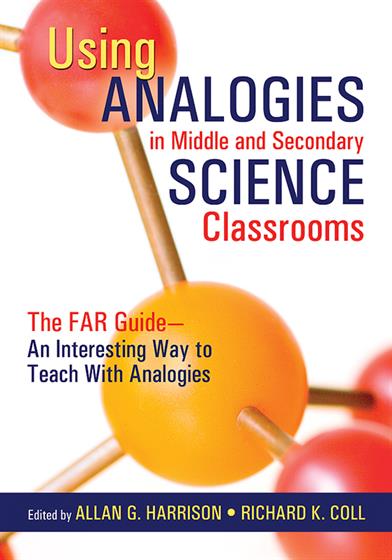Description
"Makes a distinct contribution to science instruction. Many teachers attempt to use analogies and metaphors to introduce abstract concepts; however, little is available on how to do this with specific examples. The authors definitely address a need."
—Douglas Llewellyn, Professor of Science Education
St. John Fisher College
"Helps preservice and novice teachers use analogies and allows teachers to bridge the gap that sometimes occurs when students are learning abstract concepts. The examples cover a wide variety of subjects and are written in a concise, easy-to-understand voice."
—John D. Ophus, Assistant Professor of Science Education
University of Northern Iowa
Use the power of analogies to enliven your science classroom and meet national standards!
When analogies are effective, they readily engage students' interest and clarify difficult and abstract ideas. But not all analogies are created equal, and developing them is not always intuitive. Drawing from an extensive research base on the use of analogies in the classroom, Allan Harrison, Richard Coll, and a team of science experts come to the rescue with more than 40 teacher-friendly, ready-to-use analogies for biology, earth and space studies, chemistry, and physics.
The authors show teachers how and when to select analogies for instruction, why certain analogies work or break down, how to gauge their effectiveness, and how to improve them. Designed to enhance teachers' presentation and interpretation of analogies through focus, action, and reflection (FAR), this guidebook includes:
- Key science concepts explained through effective models and analogies
- Research findings on the use of analogies and their motivational impact
- Guidelines that allow teachers and students to develop their own analogies
- Numerous visual aids, science vignettes, and anecdotes to support the use of analogies
Linked to NSTA standards, Using Analogies in Middle & Secondary Science Classrooms will become a much-used text by teachers who want to enrich inquiry-based science instruction.
Key features
- More than 40 content-linked, hands-on, and ready-to-use science analogies for earth science, chemistry, physics and astronomy, and biology
- Key science concepts explained through effective models and analogies
- Numerous visual aids to support the use of analogies in the classroom
- Numerous science vignettes and ancedotes
- An outline that allows teachers to plan and develop their own analogies
- A summary of research findings and the motivational impact of analogies
- Links to the National Science Teachers Association (NSTA) standards
- International authors and contributors present at AERA, NSTA, and other U.S. conferences



